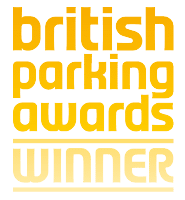Roads are getting busier in the UK, and that’s not just because of the Christmas rush. With the BBC reporting that car usage increased by almost 600,000 last year, and the largest rise taking place in south-east England, congestion issues are on the up rise. As our roads become more cluttered and more drivers appearing than ever before, the need for appropriate and regulated enforcement is paramount.
It’s become apparent in light of the above issues that there’s more of a need for parking enforcement these days, not just being necessary on the streets and in local authority car parks, but also in off street private car parks too.
In the off street environment such as these, the main concerns of the private Landlord/Landowner are to:
a) Securely protect their property from unwanted individuals and trespassers.
b) With correct enforcements, appropriate and authorised users of the landowners’ facilities are able to park freely without unauthorised vehicles obstructing them to do so.
There are many different ways in which this can be enforced, but the newest and most recent technology is; Automatic Number Plate Recognition.
What is it
Shortened to ANPR, this new system involves using CCTV style cameras to read a car’s registration plate. As with all methods of enforcement of unregulated private land, charges enforced by ANPR are subject to the law of Contract. Also, they are self-regulated through the BPA Code of Practice for Parking on Private Land.
How it works
When used in an unregulated private car park, the following process is used;
1. ANPR cameras are placed both the entrance and the exit to the private car park.
2. Photographs displaying the time of the image are taken of the vehicle itself entering the carpark, and once again when leaving. Also, in most cases, close-up, high quality images are taken of the vehicle’s number plate too.
3. The length of time the vehicle stays in the car park for is then calculated from the photographs, as they both display the time the image is taken. Calculating the duration of the car’s stay is simple due to the two sets of photographs; the entry image, and the exit.
4. If by any chance a vehicle has exceeded the maximum duration of their stay (mentioned on the ticket itself or on car park signs; for example – 3 hour stay only) then the driver of the vehicle will be automatically be fined and must pay an excess charge. This charge must be displayed clearly on either the car park’s signage or on ticket machines.
5. Terms and conditions should be set out clearly on all signage as above, and state that the customer will not receive a penalty charge notice or valid ticket at the car park. Instead, using the car’s vehicle registration number, the driver’s details from the DVLA’s Vehicle Keepers’ details database, will be obtained. After obtaining this information, (with the evidence that the driver has broken the contract for parking on private land) a fee will be sent to the registered keeper of the vehicle, including all evidence (in most cases; photographs) and charge certificate, with details of how to pay.
As with all private land enforcement, this is dependent on clear signage. This signage should be visible from every point in the car park. The BPA’s revised Code of Practice contains further details on the recommendations for all the details of the regulations relating to the signage, such as the position, placement and size. The signs must also clearly state that the car park is monitored by ANPR technology, and that the DVLA will be contacted in order to access the registered car keeper’s contact details in the event that a parking regulation is broken.







